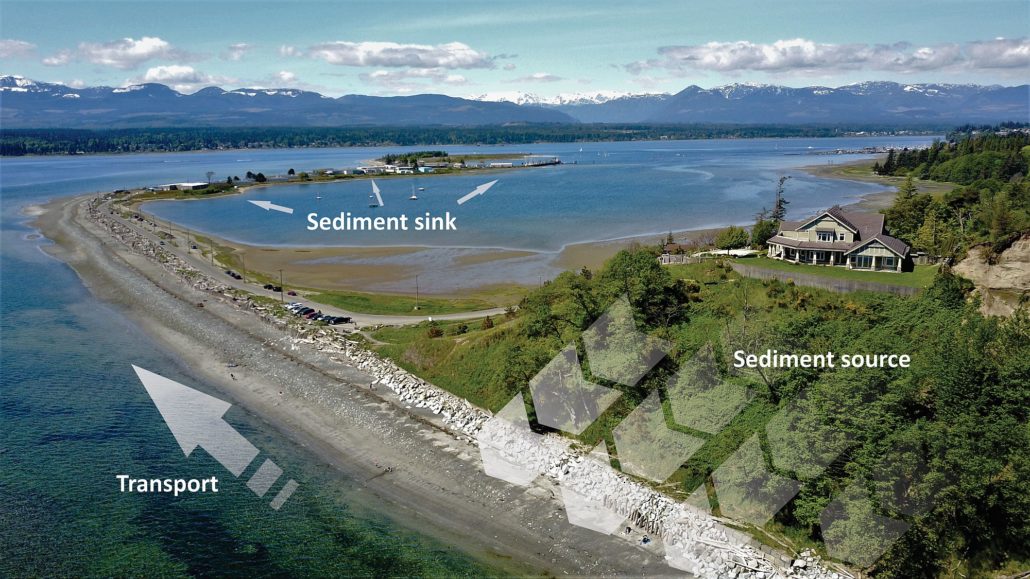HAVE YOU EVER SEEN A GOOSE SPIT?
Suggested Grade: 3
Driving Questions
- What is a spit?
- How was Goose Spit formed and how is it maintained?
Learning Intentions
- I can talk about how Goose Spit was formed and how it is maintained
- I understand that shorelines are constantly changing (dynamic)
Materials
- Spit Formation Information
- Discussion Questions
- Paper and pen
Curricular Competencies
Science/Social Studies/Language Arts:
- Asking questions
- Communicating findings
- Recognizing consequences of events
- Processing and analyzing data
Lesson
- Review information at the link Spit Formation Information, focusing on the large image of Goose Spit.
- Review the discussion questions.
- Have students write a story from the perspective of a sand grain on the Willemar Bluffs as it moves down the bluff, along the shore to Goose Spit and beyond.

Click here to download a printable version of this lesson
Discussion Questions
- What things are a factor in erosion? And how do they change erosion? Trees (vegetation) decrease erosion, slope – steeper increases erosion, storms increase erosion, winds- high winds increase erosion, more rain increases erosion etc…
- What happens if we protect the Willemar Bluffs from eroding (install armouring such as rocks and riprap at the bottom)? The beaches in front of the bluffs decrease as does Goose Spit, eventually the armouring may fail.
- Why do we want to protect the bluffs from erosion? Houses and properties. What are our other options? Don’t live on a bluff, move the house further back from the bluff.
Community Connection
Take your class on a Field Trip to Goose Spit either through Project Watershed or on your own.

